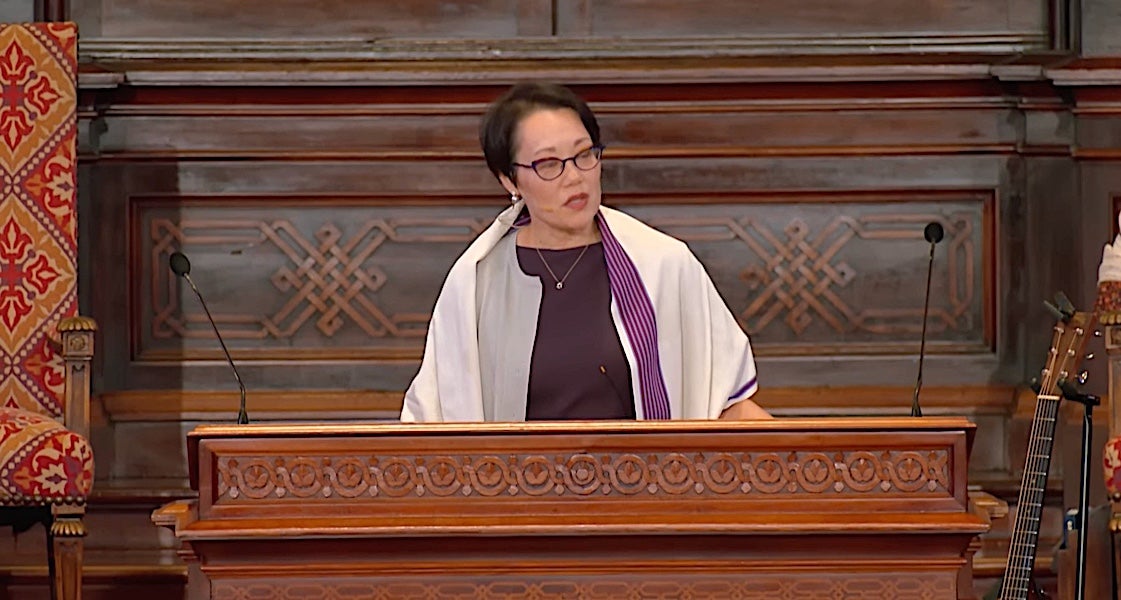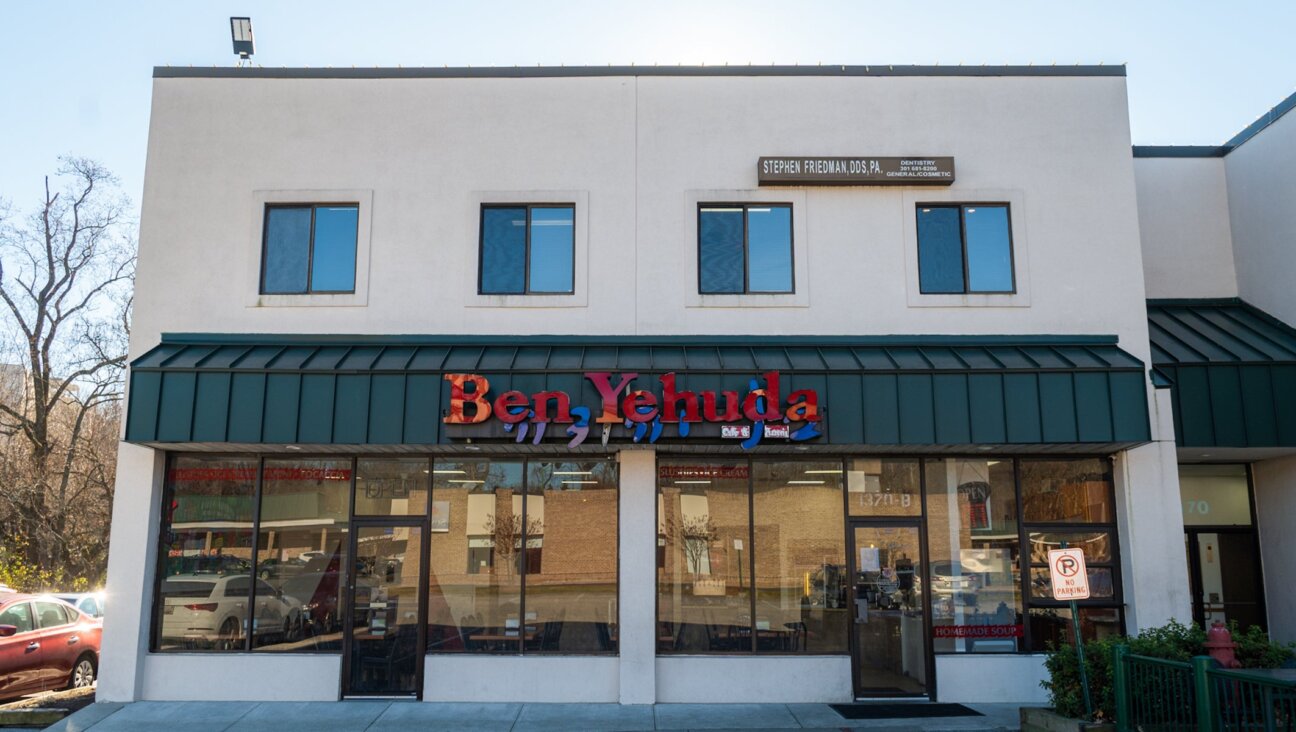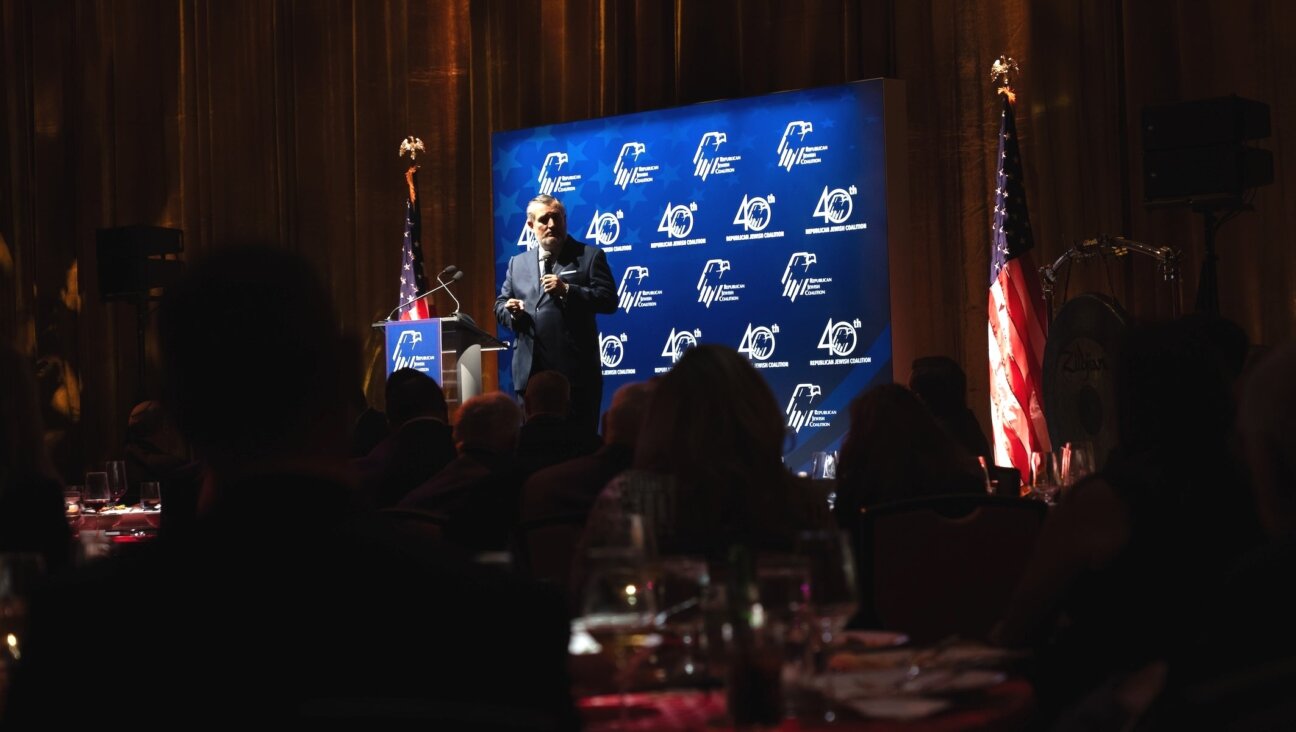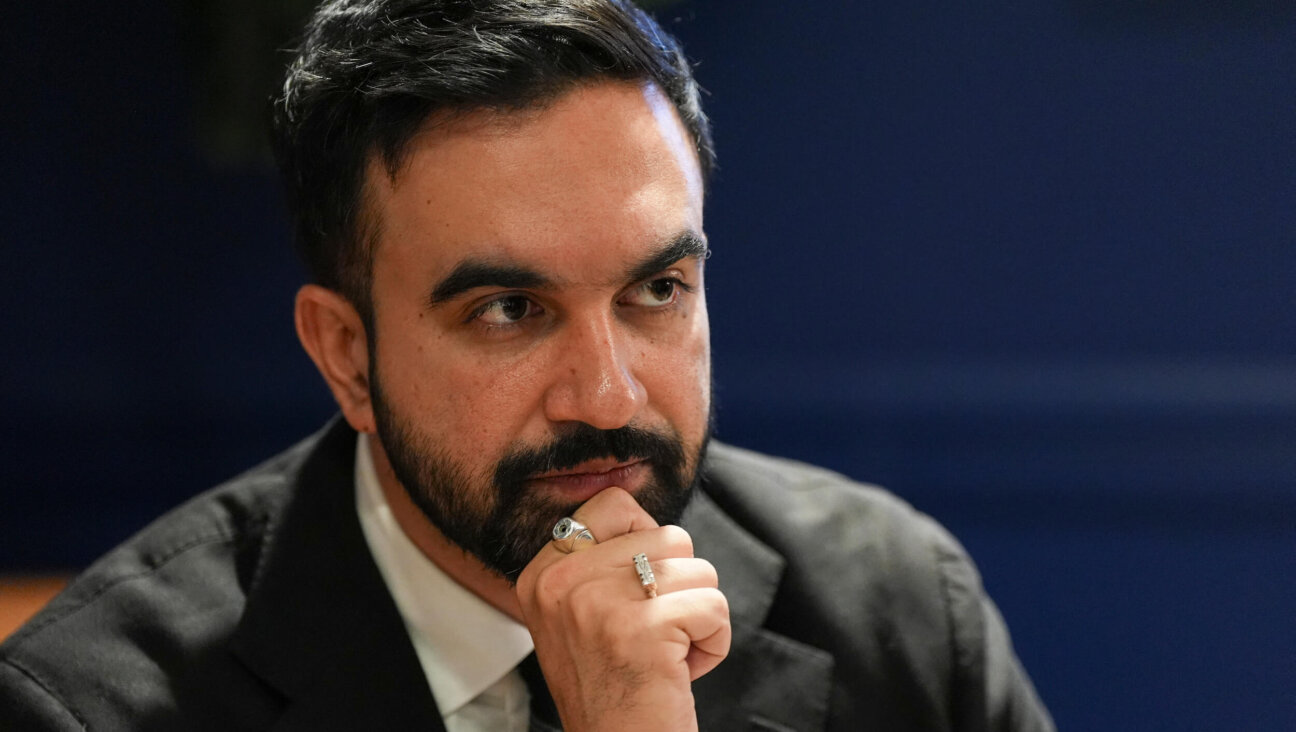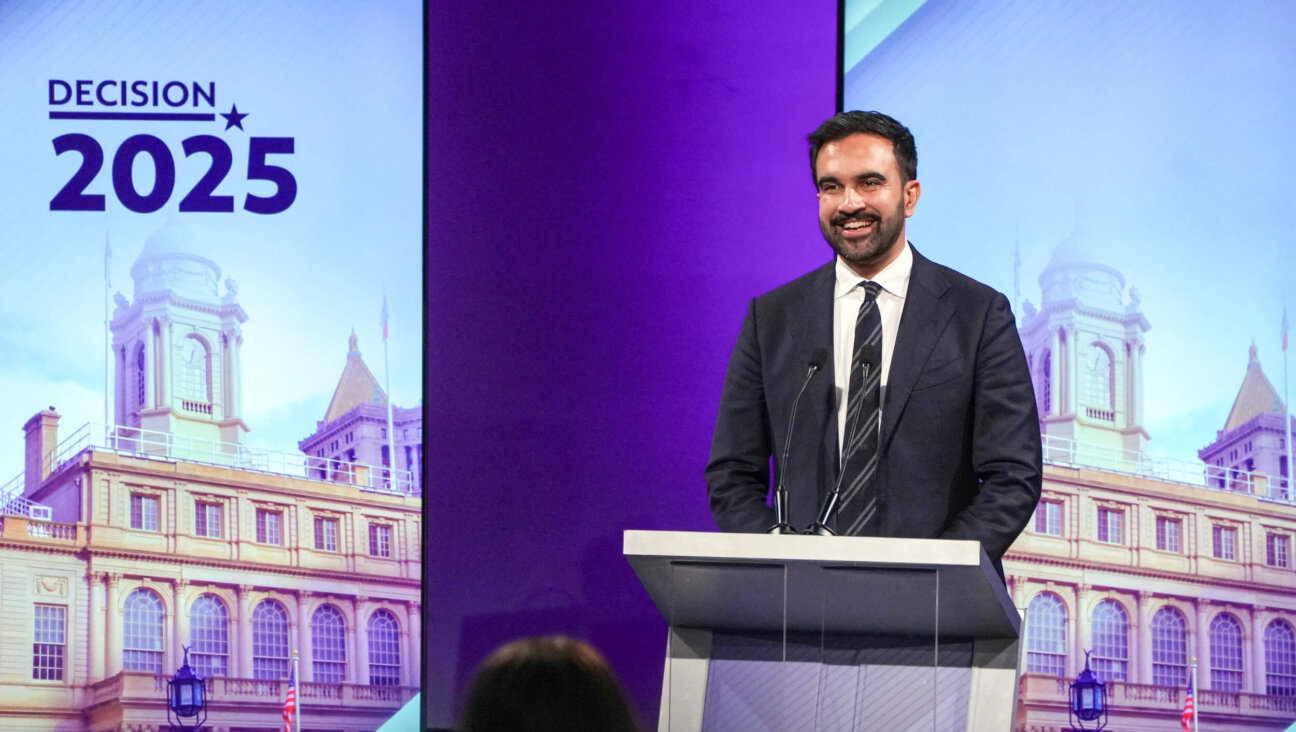A film about the destruction of the Second Temple premiered in 2021. Oct. 7 gives it new resonance.
‘Legend of Destruction’ is screening at multiple synagogues in the New York area for Tisha B’Av
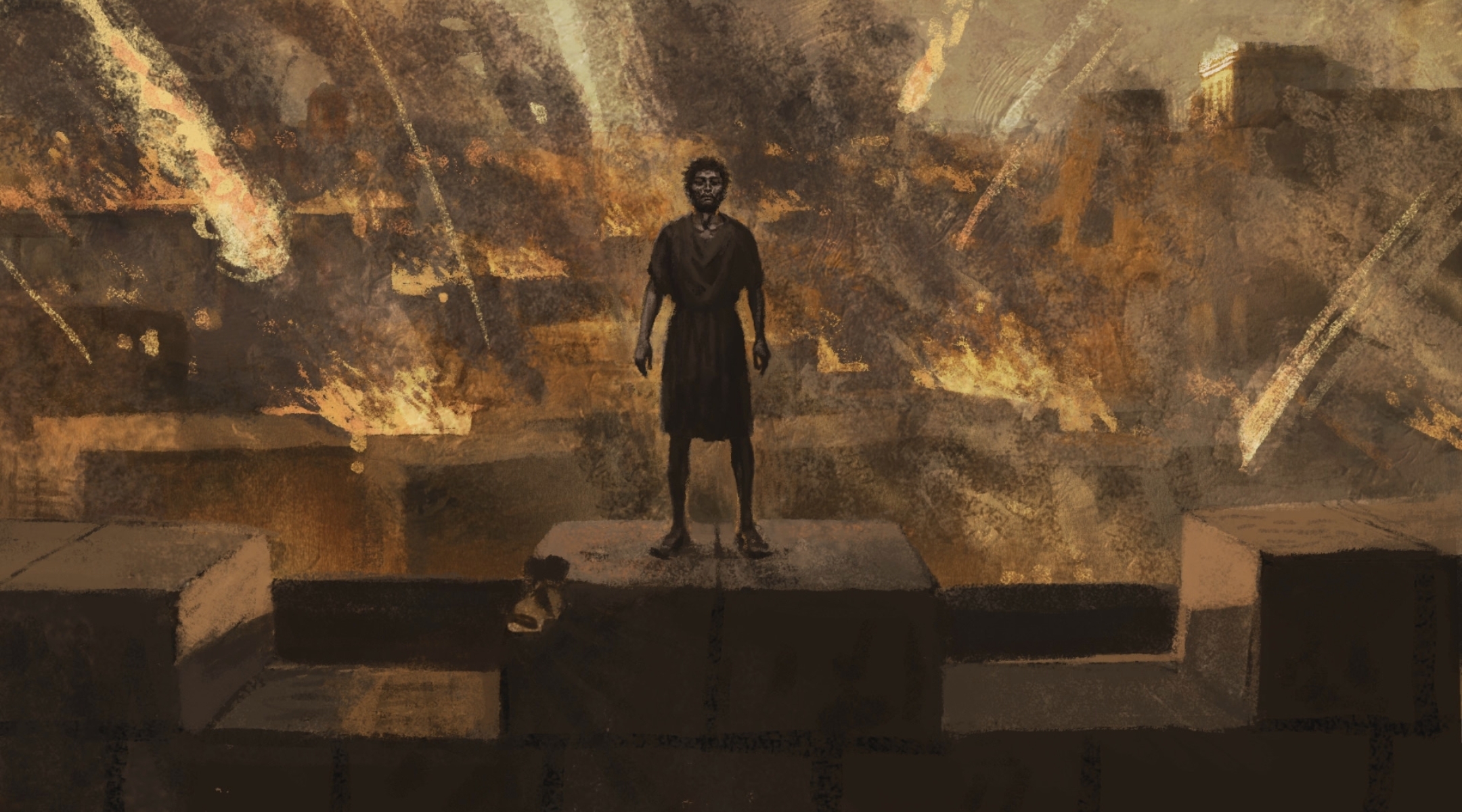
Ben Batich, a 1st-century leader of the Jewish Zealots, is a character in “Legend of Destruction,” which depicts the Roman siege of Jerusalem. (David Polonsky & Michael Faust/Legend of Destruction)
(JTA) — As the resident film impresario at Manhattan’s JCC, Isaac Zablocki specializes in screening movies that challenge, provoke and enlighten audiences.
When he first heard of the Israeli feature “Legend of Destruction,” before it had even hit theaters in 2021, he knew he needed to screen it.
While many of the films Zablocki screens revolve around current events — including a steady diet of offerings on Israel’s myriad challenges — “Legend” was different: It retold one of the most well-worn ancient Jewish narratives, about the destruction of the Second Temple in Jerusalem in 70 C.E.
To Zablocki, it could not have felt more urgent. That feeling has only intensified this year.
“It was relevant before Oct. 7. It’s even more relevant now,” said Zablocki, director of the JCC’s Israel Film Center.
“It’s really shocking how history repeats itself,” he added. “I mean everything we’re showing these days, it immediately gets — you put on the glasses of Oct. 7. Has Oct. 7 made the Jewish community more unified? Has it created, actually, more division? And I see both.”
The film — about the intra-Jewish rifts that preceded the temple’s destruction — was acclaimed in Israel precisely because it reflected the deepening social and political divides in 21st-century Jerusalem. It won four awards at Israel’s version of the Oscars and, in the middle of a rowdy session in Israel’s parliament, then-Prime Minister Naftali Bennett exhorted lawmakers to go see the movie to understand that polarization “is not the way.”
The movie came to the U.S. in English last year with a fresh celebrity voiceover cast, and drew praise. But while social rifts are still festering, the movie has not found mass appeal stateside. It has “struggled,” according to The Art Newspaper, which reported that the movie has barely been screened. “What has scared off audiences outside Israel and the international film industry is the war in Gaza.”
And that is exactly why Jewish institutions are lining up to screen the movie in the days surrounding Tisha B’Av, the fast day that commemorates both temples’ destruction. While the world of arts and culture has seen a growing aversion to Israeli works since Oct. 7, Jewish creatives feel it could not be more relevant in the midst of a war that has exacerbated fissures both in Israeli society and among American Jews. Add onto that a climate of rising antisemitism and a bitter presidential campaign nearing its final stretch.
“It’s… a metaphor for the state of democracies in general, and divisions, and the deep meaning of divisions, and the great danger that we are experiencing, I think, in the western world in general, or the democratic world,” said director Gidi Dar, known for helming 2004’s popular film “Ushpizin.” “It’s not even just western states which are falling apart from within. Many states, maybe even America.”
The movie employs an innovative medium, telling the story by switching between and panning across 1,500 still paintings composed on Photoshop. Drawing from biblical as well as contemporaneous sources such as the writings of Roman-Jewish historian Flavius Josephus, it portrays the rival Jewish groups whose infighting eased the Roman army’s way into Jerusalem ahead of the burning of the temple.
And it came with an impeccable pedigree — in addition to Dar, its lead artists had previously worked on Oscar nominee “Waltz With Bashir,” and the voiceover cast was full of Israeli A-listers. When it came to the U.S. last year, it was voiced in English by a star cast including Oscar Isaac, Elliot Gould and Evangeline Lilly, and drew comparisons to “Gladiator” and “Ben-Hur.”
The stars also touted its resonance with contemporary conflicts.
“It’s tragic, it’s really brutal and sad, but it’s true,” Lilly said in a promotional video. “It’s a very important cautionary tale today.” Isaac called it “terrifyingly relevant.”
But Dar framed the focus on Jewish audiences as a choice, not a last resort. “After Oct. 7, things changed a lot, and I made a decision to start in a grassroots work in the Jewish world,” Dar told JTA.
“I feel the first thing is to go with my own people in the Jewish world, and later on, to grow, because I do think that this film is relevant also, you know, in [a] more general perspective which is not only Jewish,” Dar said. “I think that the film is also addressing issues which are today super relevant in the status quo of democracy.”
Later, he said, he’d like to explore screening the film in more contentious locations, such as college campuses that saw anti-Israel protests this year.
“What happens then?” he asked. “And [it] depends: to who do we screen it? I might even screen to the guys who are anti-Israeli. But to be honest, I can’t predict it. I hope something will happen. I hope they don’t ignore it.”
In the meantime, Zablocki hopes that those who view the film at the JCC, both Jewish and not, are able to internalize its warning.
“The Temple was destroyed for ‘sinat chinam,’ for needless hate,” Zablocki said, citing an interpretation of the events of the period found in the Talmud. “And that hate that exists in the internal division, different groups in a world when we’re living now, in a world that is so polarized and there’s so much division to the Jewish community, within the American community, within the Israeli community, we know what that means, and it can only end in disaster. And that message, to bring that out through a dramatic tale is just something that is so necessary right now.”

